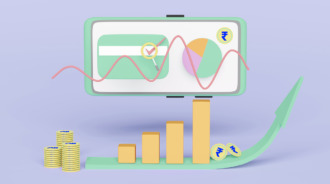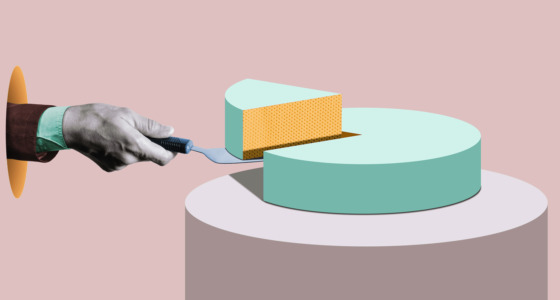

In many situations, you may find yourself lacking the necessary funds to finance urgent activities in life. One option that often comes to mind is getting a loan to help achieve your goals. However, when repaying the loan, you will encounter a concept called amortization. But what exactly is amortization? Let’s delve into the details.
Definition and Examples of Amortisation
Amortization refers to the process of repaying a loan by making equal payments at regular intervals. The payment intervals can be monthly, quarterly, or annually, depending on the terms and conditions of the loan agreement.
Most borrowers prefer to amortize their loans on a monthly basis, as it aligns with their monthly salaries and makes it easier to manage the payments. However, for business organizations, a three or six-month amortization period is often preferred, as they require more time to generate sufficient income for loan repayment.
Each periodic payment typically includes a portion of the principal amount, the associated interest fee, and any other costs related to the loan repayment plan. Nevertheless, in cases where the borrower is a business organisation, a three or six-month basis of amortisation is preferred because business organisations normally take more time to create enough income needed to amortise a loan.
For example, if you have a $1 million loan with a 12% annual interest rate, you might repay it over 10 equal periods, with each period consisting of a $100,000 principal amount plus the accrued interest. The final payment will clear the loan entirely.
How Does Amortisation Work?
The process of amortization can be easily understood with the help of an amortization schedule. This schedule is a table that shows how loan payments are distributed over the repayment periods. It includes the following information:
- Scheduled payments: The amount you need to pay each month until the loan is fully repaid.
- Principal payment: After deducting the interest charges, the remaining portion of your payment goes towards reducing the debt.
- Interest expenses: A portion of each payment covers the interest charges. To calculate this amount, your remaining loan balance is multiplied by the monthly interest rate.
While the total payment remains the same each time, the monthly payments are divided between interest and principal in varying amounts. During the initial stages of the loan, the interest charges are higher. As time goes on, a larger percentage of each payment is applied to the principal, resulting in decreasing monthly interest payments.
An Example of Amortisation
Table 1.1 is an amortization schedule that provides a clear example of how loan amortization works. Please note that an amortization schedule and an amortization table refer to the same document, which shows the monthly payment amount for your loan.
The total periodic payment is determined by discounting the loan amount at the given interest rate, and this payment remains the same across all periods. However, the payment consists of different portions for the principal and interest charges.
In this example, the amortized loan is $12,000, with an annual interest rate of 2% over a period of 4 years. The fixed payment is $3,000.
Table 1.1 Loan Amortisation Schedule
| End of period | Beg. Of year principal | Periodical Interest at2 % p.a Paid | Periodical Principal paid | Periodical total Loan payment | End of the period remaining principal |
| 1 | 12,000 | 240 | 3000 | 3240 | 9000 |
| 2 | 9,000 | 180 | 3000 | 3180 | 6000 |
| 3 | 6,000 | 120 | 3000 | 3120 | 3000 |
| 4 | 3,000 | 60 | 3000 | 3060 | 0.00 |
Types of Amortising Loans
When applying for a loan, it is essential to understand the type of loan and how it is amortized. This understanding will help you make proper arrangements to ensure timely repayment. Here are some common types of loans that involve amortization:
1. Auto Loans
a) Direct auto loan
Borrowers receive money directly from the lender to purchase a car from a dealer. Regular payments are made according to the agreed terms.
b) Indirect auto loan
Car dealerships offer vehicles to borrowers on credit terms. The buyer enters an installment sale contract with the dealer, who then sells the contract to a financial institution. The borrower repays the loan in a similar manner to a direct loan.
2. Home Loans
Home loans are used to purchase a house. These fixed-rate mortgages typically have longer terms, ranging from 15 to 30 years. Borrowers make regular monthly payments for the duration of the mortgage.
3. Personal Loans
Personal loans are obtained by individuals from financial institutions like banks and credit unions. The repayment period for these loans is usually between two to five years. Borrowers can use these loans for various personal needs, such as vacations, school fees, or other projects. Collateral may be required depending on the loan amount.
By understanding the concept of amortization and the different types of amortizing loans, you can make informed decisions when it comes to managing your loan repayments.

Credit and Loans That Aren’t Amortised
Non-amortized credits and loans do not have a specific repayment schedule. Instead, the borrower pays the principal in one lump sum.
These types of loans are typically used when borrowers have limited access to collateral. Examples include credit card loans, home equity lines of credit, other credit lines, land contracts, and real estate financing.
1. Interest-only loans
With interest-only loans, the borrower only pays the interest for a set period, and the principal is paid in full at a predetermined date. This is a common method for repaying student loans, although most borrowers choose to make combined principal and interest payments instead of paying off the loan all at once.
Interest-only payments are made for a limited time, usually lasting five to ten years in non-amortizing business loan situations. Business owners should be cautious when choosing this type of loan and set aside money to plan for the principal repayment during that time.
2. Balloon loan
A balloon loan is a non-amortized loan where the borrower makes small payments initially, but a large principal payment becomes due at the end of the loan term. Unless you have a significant amount of cash available, you will likely need to refinance the balloon payment.
3. Credit cards/Revolving debt
Credit cards and revolving debt allow you to borrow multiple times on the same card. As long as you meet the minimum payment requirements, you can choose how much to pay each month until the loan is fully repaid.
4. Deferred interest loan
A deferred interest loan is a type of loan where interest payments are postponed for a certain period. As long as the loan is paid in full before the end of the deferred interest period, no interest will be charged.
Deferred interest loans are commonly offered by retail establishments to finance purchases or credit cards as a way to attract new borrowers.
Advantages of Amortization
Understanding the concept of loan amortization offers several benefits when choosing a loan:
1. Easy comparison of loan options
Amortization schedules make it easier to compare different loan options by showing the total cost of each loan and the accrued interest. This allows borrowers to determine which loan offers the best payment structure and interest rates.
For example, if you have two loan options with the same interest rate but different payment schedules (e. . 5-year and 10-year loans), an amortization schedule can help you understand the difference in interest paid. This allows you to choose the loan with a payment schedule that suits your needs.
2. Opportunity to build equity
Amortization schedules can help borrowers build equity, especially with mortgage loans. By paying both the principal and interest according to the amortization schedule, homeowners can accumulate equity in their homes. This equity can be leveraged for purposes like cash-out refinancing or home equity loans.
3. Flexible payment timelines
Using an amortization schedule, borrowers can adjust their payment timelines based on the amount they pay toward the loan each month. For example, making an extra payment of $100 on a $500 monthly loan payment can help reduce the outstanding balance faster since the interest for that period has already been paid. This allows borrowers to pay off their debt sooner and potentially save money.
General
In conclusion, understanding amortization and how it works can help borrowers plan their loan payments and utilize amortized loans effectively to improve their financial situation.










